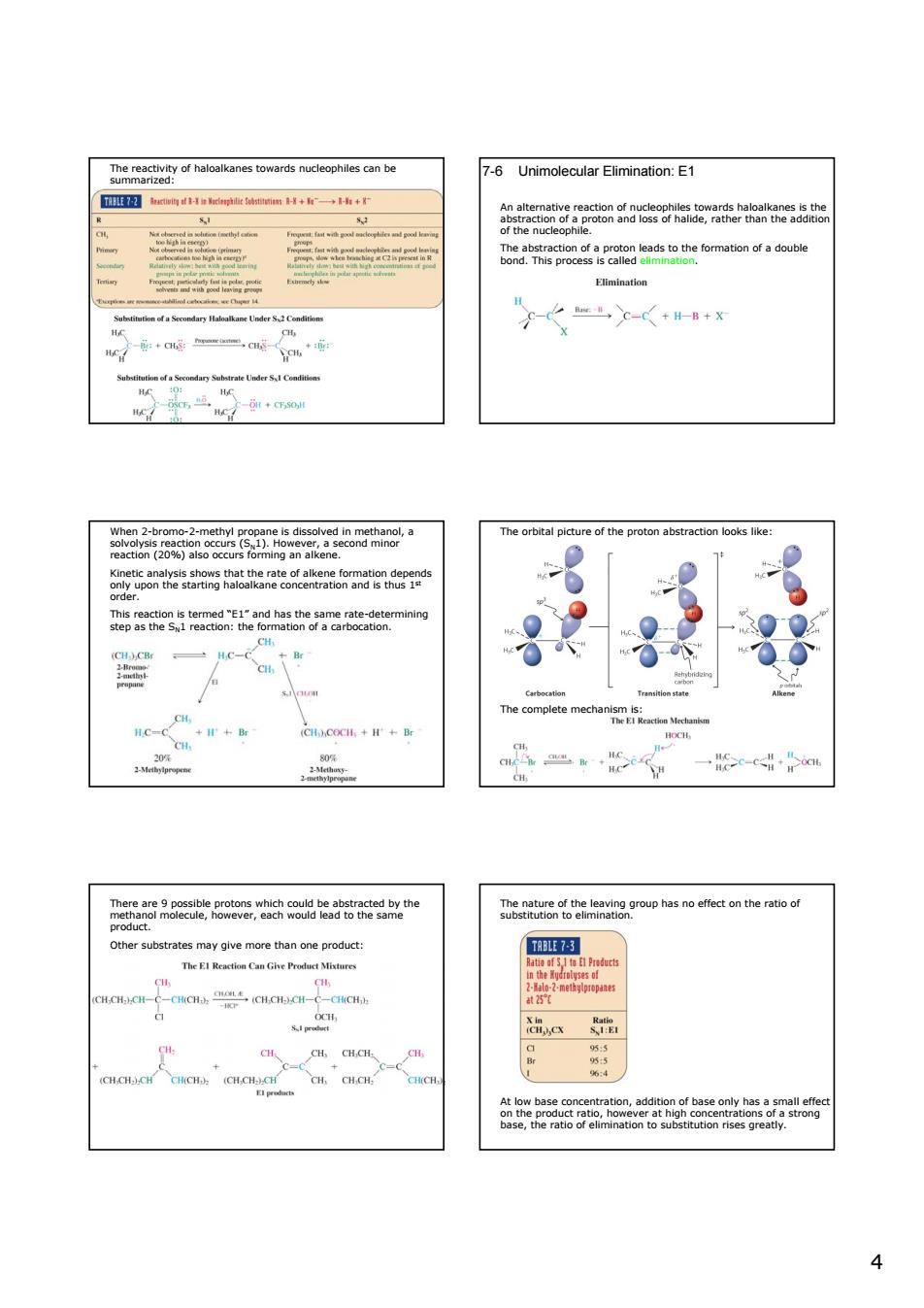正在加载图片...

7-6 Unimolecular Elimination:E1 af1-1 +有一→h+等 g88e8a The orbital picture of the proton abstraction looks like: aaag2eahmea8e 8 nin 0 一e-a" CcOC.B 一c-c-a e2eag尚ane Other substrates may give more than one product TABLE 7-34 The reactivity of haloalkanes towards nucleophiles can be summarized: 7-6 Unimolecular Elimination: E1 An alternative reaction of nucleophiles towards haloalkanes is the abstraction of a proton and loss of halide, rather than the addition of the nucleophile. The abstraction of a proton leads to the formation of a double bond. This process is called elimination. When 2-bromo-2-methyl propane is dissolved in methanol, a solvolysis reaction occurs (SN1). However, a second minor reaction (20%) also occurs forming an alkene. Kinetic analysis shows that the rate of alkene formation depends only upon the starting haloalkane concentration and is thus 1st order. This reaction is termed “E1” and has the same rate-determining step as the SN1 reaction: the formation of a carbocation. The orbital picture of the proton abstraction looks like: The complete mechanism is: There are 9 possible protons which could be abstracted by the methanol molecule, however, each would lead to the same product. Other substrates may give more than one product: The nature of the leaving group has no effect on the ratio of substitution to elimination. At low base concentration, addition of base only has a small effect on the product ratio, however at high concentrations of a strong base, the ratio of elimination to substitution rises greatly